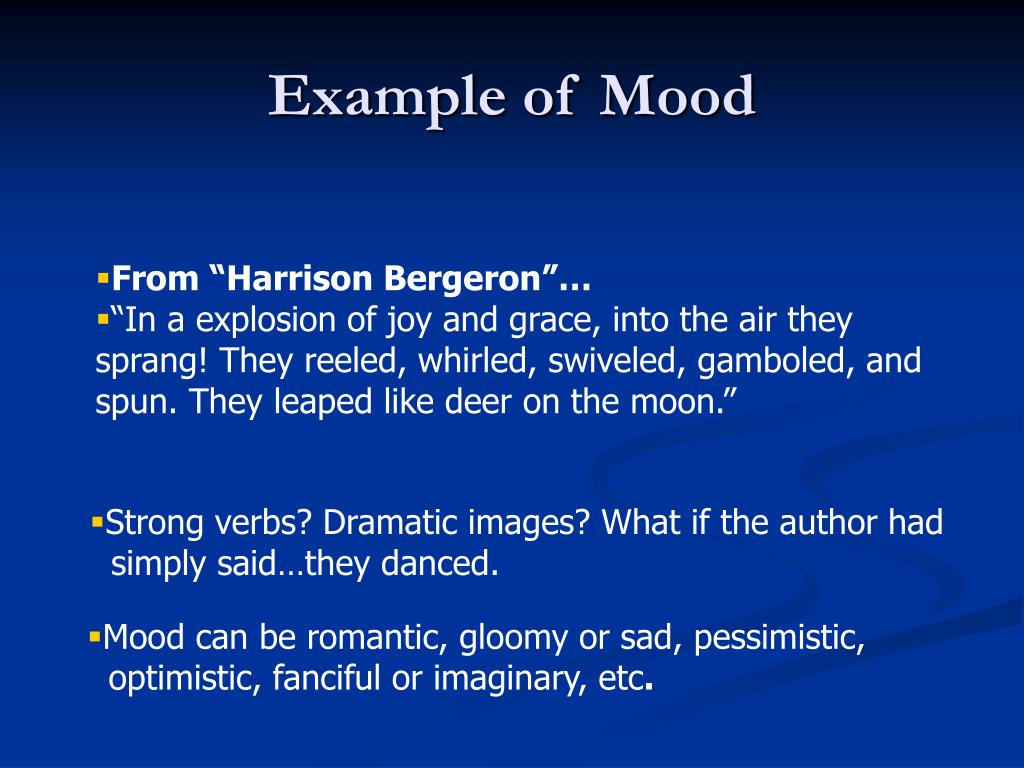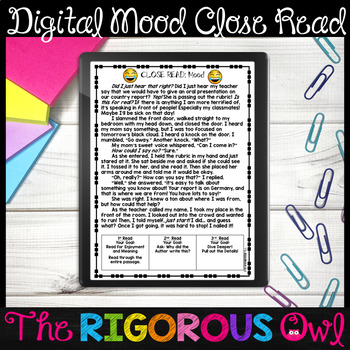

I almost wish I hadn’t gone down that rabbit-hole-and yet-and yet-it’s rather curious, you know, this sort of life!” Alice’s Adventures in Wonderland by Lewis CarrollĬarroll uses whimsical settings and descriptions to create an extravagant world. “It was much pleasanter at home,” thought poor Alice, “when one wasn’t always growing larger and smaller, and being ordered about by mice and rabbits. It’s done in such a subtle manner that as children, we can’t immediately see why it makes us feel a certain way. Example Two:Īlice in Wonderland is glorious in so many ways, but in this case, Carroll is also an expert when it comes to creating mood on the page. The clever placement of the characters automatically ‘locking the door’ makes the reader feel fear. The reader is left with a sense of foreboding and fear, despite the setting being typically welcoming. Christie is deliberately creating a mood of unease by way of subverting expectations (but more on this later). The modern, open and safe atmosphere of the house should be a non-threatening location but readers are left feeling uneasy.

Her setting and atmosphere deliberately do not match the mood she is creating.

What Christie has done here is incredibly clever. Each of them went into his or her own room, and each of them automatically, almost without conscious thought, locked the door… And Then There Were None by Agatha Christie They exchanged good-nights on the upper landing. Somehow, that was the most frightening thing of all. There was nothing hidden in this house, nothing concealed. There were no dark corners – no possible sliding panels – it was flooded with electric light – everything was new and bright and shining. But this house was the essence of modernity. If this had been an old house, with creaking wood, and dark shadows, and heavily panelled walls, there might have been an eerie feeling. The others went upstairs, a slow unwilling procession. Let’s study different moods in writing with the following examples: Example One:Īgatha Christie is one of my favourite authors because she truly makes me feel something. The mood of a story is determined by using different words, imagery, and tone. The reader experiences different moods in different genres, which is a huge part of their experience. It doesn’t matter if you’re writing a hilarious rom com, or a spooky gothic thriller, your end goal is the same – you are creating mood.īecause if you can evoke emotion, your reader is more likely to remember your story long after they turn the final page. When writing your first draft make a note of how you want your reader to feel, then look at the different ways you can achieve that. Maybe you want them to feel mistrusting of your main character.įor instance, if you were to start the book with ‘it was a dark and stormy night’ and use short sentences, the mood (feeling for the reader) is immediately one of unease and apprehension. If you are writing a thriller, for instance, you want the reader to feel unnerved. But don’t get tone, or mood, confused with ‘author voice’. The tone of how the author portrays a character on the page helps you identify the mood of a book. Tone in writing often refers to the author/protagonist’s feelings and how they’re expressed on the page, whereas mood is how the reader feels as the result of the tone used by the author to affect mood.įor example, the tone an author has used may be described as ‘immersive’, ‘dark’, ‘compelling’. Mood refers to how a reader feels as a result of an author’s tone used to evoke more than one mood.
MOODS IN LITERATURE HOW TO
I will explain the difference between mood and tone, and how to utilise both effectively to engage the reader and leave them feeling the exact emotion you intended.ĭiscover how to become a better writer and get people’s emotions evoked through your writing. In this article, we will be looking at mood examples and how the right mood words can create emotional responses in your readers. There are so many different ways a book can make you feel – you may want to read something that puts you in an eerie mood, a cheerful mood, whimsical mood, or a romantic mood. Readers often choose a book they want to read based on what ‘mood’ they are in – and, in turn, how that book will make them feel.


 0 kommentar(er)
0 kommentar(er)
